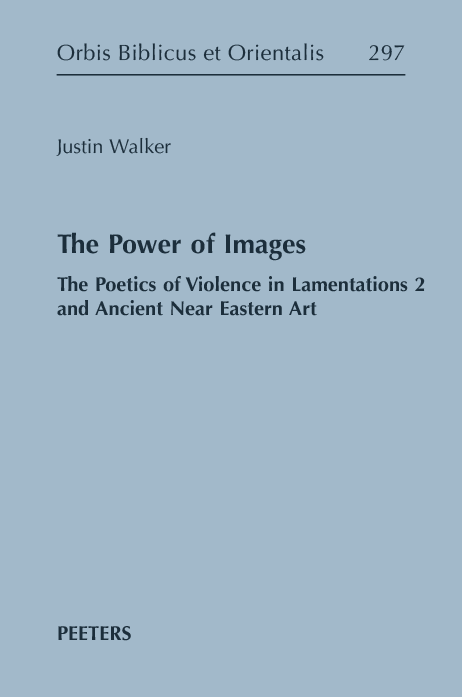Orbis Biblicus et Orientalis, 297
The publication of Keel’s
Symbolism of the Biblical World (German
1972, English 1978) demonstrated the val-ue of ancient Near Eastern
iconography for interpreting biblical texts. In the intervening decades
since (and of) Keel’s work, iconographic exegesis of the Hebrew Bible
has witnessed significant methodological and theoretical developments,
many of which can be broadly characterized by an increasing concern with
issues of histor(icit)y and contiguity in the image-text comparison.
The present work represents a (re)turn to a phenomenological approach to
iconographic exegesis that is especially concerned with how images and
texts might mutually inform one another at the level of their respective
poetics. As a test case for such a comparison, this volume examines how
the phenomenon of violence figures in Lamentations 2 and in
Ashurbanipal’s palace reliefs - specifically, one of the Battle of
Til-Tuba programs (Southwest Palace, Room 33) and the lion hunt reliefs
(North Palace, Room C).
The project begins with a discussion of the
neurological and cognitive relationship between seeing images with the
eye and imagining them with the “mind’s eye” as a means of justifying
such a phenomenological approach that compares how ancient artists and
the biblical author construct the violent images that are seen and
imagined in their works, respectively (ch. 1). It then conducts detailed
analyses of the poetics of violent imagery in Lamentations 2 (chs.
2-3), the Battle of Til-Tuba reliefs (ch. 4), and Ashurbanipal’s lion
hunt reliefs (ch. 5) before providing an extended comparison of the
similar and divergent ways that violence figures in the literary and
textual images of each piece (ch. 6). Overall, the volume profers new
interpretive insights concerning the phenomenon of violence in the
ancient Near Eastern artwork and Lamentations 2 specifically -
particularly as it pertains to the poem’s construction of Yahweh’s and
Zion’s bodies, its perspectival play, its manipulation of time, and the
“power” of its imagery in eliciting the divine gaze. The project also
demonstrates the utility of ancient Near Eastern art for illuminating
not only what but also how a given phenomenon figures in biblical poetry
and vice versa.
This book is published open access. It can be downloaded
here.
year: 2022
isbn: 9789042949850
e-isbn: 9789042949867
pages: X-322 p.










 Stumble It!
Stumble It!

No comments:
Post a Comment